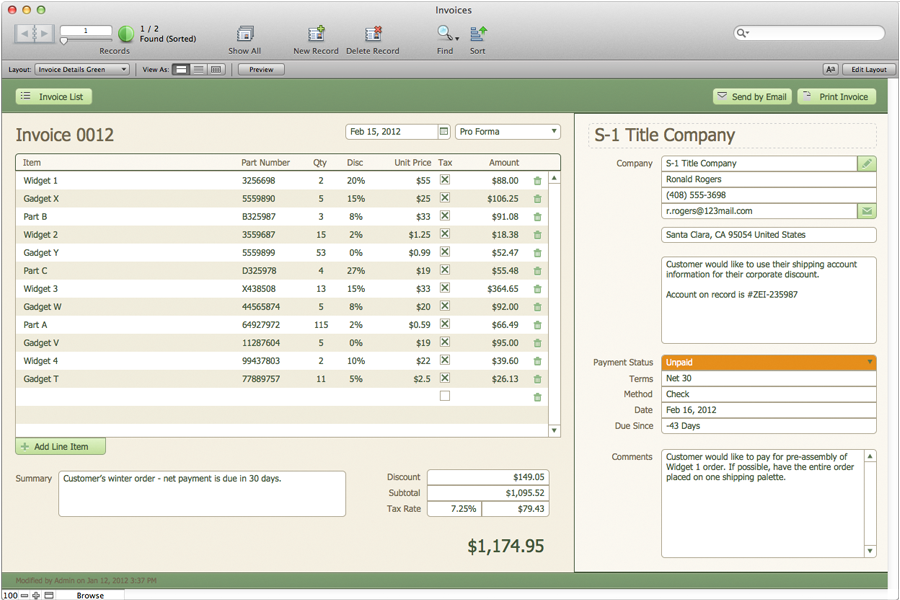
- #Filemaker server 13 specifications how to#
- #Filemaker server 13 specifications install#
- #Filemaker server 13 specifications full#
- #Filemaker server 13 specifications pro#
- #Filemaker server 13 specifications software#
#Filemaker server 13 specifications install#
To install on more than one machine, see Deploying FileMaker Server across multiple machines.įileMaker Server requires a web server in all deployments.
#Filemaker server 13 specifications how to#
As a rough guideline, an Instance that would be more suited to hosting FMS, say a m3.xlarge Instance with 4 vCPU, 13 ECU, 15GB RAM and 2 x 40GB SSD is in the region of $400 a month - a significant outlay.This section explains how to install FileMaker Server on a single machine. Do however become familiar with the pricing structure and what an upgraded Amazon Machine Image will cost before launching a new Instance. If you do wish to run FMS on AWS on a more permanent basis, consider upping which Amazon Machine Image you select - we chose the Free Tier most basic option just for demo purposes but its technical specs are low and depending on the size and complexity of the database(s) that you will be hosting, they may fall well short. We hope that this has been a useful introduction to the possibilities that Amazon Web Services can offer. There are plenty of resources out there to find out more, including best practices, tips and tricks - one source is CloudEndure. Do be careful about what you sign up for - not every service qualifies for the Free Tier package. This post doesn’t cover all of the possible issues and options that AWS brings, so please take the time to investigate the services more, including backup strategies, CloudWatch and Elastic IPs. It’s pretty awesome and especially as it’s free (for 12 months at least).

So, that’s our FileMaker Server set up and running on a Free Tier Instance using Amazon Web Services’ EC2 Compute. One last thing… If with the FMS admin console you have set up email notifications to be dispatched (for backups, errors etc), be sure to open whichever port you are sending out on in the AWS Security Group outbound rules, or FMS won’t be able to dispatch the emails.
#Filemaker server 13 specifications pro#
Now if you return to FileMaker Pro and select the Favorite Server you set up above, you should see the sample database and be able to open it. Click Next and name the rule something appropriate and descriptive. Click Next and leave all three options checked.

Then go to the Local Resources tab, click More and select the drive(s) you wish to browse while on the server.Ĭlick Next and ensure Allow The Connection is selected.

Right click on the RDP file and choose Edit.

#Filemaker server 13 specifications software#
If you have the install software on your local computer, you can adjust a setting in the RDP file to have your local drive(s) show up in the remote session on the server. If you do, be sure to close the port (remove the rule from the Security Group) when you’ve finished - no point in having open ports if they’re not needed ongoing. If downloading from an FTP site, you may need to open different ports. In addition, in setting up the Security Group in step 5 in the previous post, we did not enable web traffic (port 80) so you will need to go back and do this if you want to download the install file. However, Internet Explorer (the default browser on the server) is fairly locked down and will prompt you numerous times to ask if what you’re trying to do is safe, and you may need to add the site you’re downloading from to the Trusted Sites list. If you have a download link for the software then you can use this. There’s a more than couple of ways of doing this but we’ll cover two:
#Filemaker server 13 specifications full#
This post is not a full tutorial on installing and configuring FileMaker Server, but we do need to get our install file on to our new server so we can proceed with the installation.


 0 kommentar(er)
0 kommentar(er)
